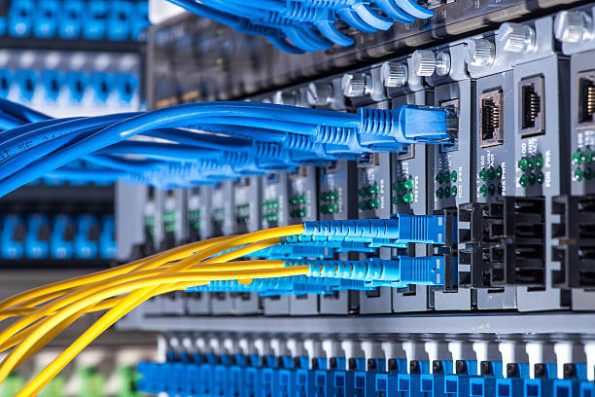“Without Fiber Optic Communication, there would be no information age.”
This is the evaluation made by David Kessler, the head of the World Internet Consortium (W3C), when talking about the importance of optical fiber.
In recent years, 5G networks have been accelerating their promotion in various countries, but the key component of 5G networks – the core material of optical communication modules – optical fiber – remains a scarce commodity. Some netizens lament that the information that used to require trekking through mountains and rivers is now running in the “optical fiber”.
One fiber connects the world
“By spreading fiber optic cables to villages, rural communication networks have become the backbone.” In a remote mountain village in Hong’an, Hubei, Xia Zu, a village party member, told reporters about the changes that fiber optic cables have brought to the local area.
Xia Zuxiang was born into a peasant family. In 1986, he was admitted to Wuhan University of Posts and Telecommunications (now Wuhan University Branch of China Telecom Corporation) and became a grassroots cadre after graduation. In 1996, Xia Zuxiang was selected as the village branch secretary. At that time, this remote small mountain village, which was more than 30 kilometers away from the county town, had no telephone or internet, and the living standards of the villagers were generally low.
In 2004, China Telecom began piloting fiber optic cables to households, but Xia Zuxiang felt that the construction cost was too high and kept delaying. In 2007, the village chief Huang Xiqiu decided to hire someone to lay optical fibers in the village at his own expense. Huang Xiqiu is also a loyal user of China Telecom. In 2002, he established an agricultural company, mainly providing agricultural material sales and agricultural machinery operation services to surrounding farmers. Due to transportation restrictions, company employees can only contact Huang Xiqiu for work by phone or text message.
After the fiber optic cable entered the household, Huang Xiqiu’s company quickly achieved “informatization”. By using a computer, one can always understand the company’s business situation and communicate with employees more smoothly and efficiently. Afterwards, Huang Xiqiu also led surrounding villages to carry out the renovation of fiber optic cables entering households.
After 2010, with the advancement of the “Village to Village Connection” project, more and more rural areas have used optical fibers. Xia Zuxiang told reporters that now the village can not only achieve broadband internet access and full coverage of 5G signals, but also have 4G signal base stations. “Through fiber optics, our lives have become more and more convenient,” Xia Zuxiang said.
According to Ke Ruiwen, Chairman of China Telecom Group Co., Ltd., at the performance conference for the first quarter of this year, as of March, China Telecom has built over 160000 5G base stations, accounting for more than 30% of the total number of 5G base stations in the country, achieving 5G network coverage in “ten counties and one city”.

Ethernet optical cables are competing to upgrade Fiber Optic Communication
According to the data released by the International Telecommunication Union (ITU), the global Internet users have reached 5.9 billion, accounting for more than 70% of the global population. Faced with such a huge number of users, how can data flow rapidly in various corners of the world? Fiber optic plays an irreplaceable role.
Fiber optic communication cable, also known as fiber optic communication cable, is a cable made of glass or plastic fiber core and covered with a protective layer. Due to its high tensile strength and light weight, it can serve as a carrier for transmitting information and transmitting optical signals to distant places. “In Ethernet, 100 megabits of data can propagate over 1 million meters per second,” said Professor Zhang Bo from Wuhan University of Science and Technology.
In recent years, many countries have been accelerating the construction of gigabit optical networks. The so-called “gigabit optical network” refers to a fiber optic network with a gigabit bandwidth. It is reported that Japanese economists predict that by 2026, the domestic IP traffic in Japan will reach 40ZB (1ZB equals 1021 bytes), and gigabit optical networks can meet a large amount of data transmission needs.
At present, gigabit optical network is an important component of the key information and communication infrastructure projects under construction in China during the 14th Five Year Plan period. Zhao Zhiguo, Director of the Information and Communication Development Department of the Ministry of Industry and Information Technology, stated at a press conference held in February this year that as of the end of 2022, 1.615 million 5G base stations have been built and opened in China, accounting for 65% of the total number of mobile base stations in the country. All cities at or above the prefecture level and/or urban areas have already built and opened gigabit optical fiber networks.

It is understood that the current fiber optic cable industry in China continues to maintain rapid and stable development, with continuous improvement in technological level and expanding market size. According to statistics from the Ministry of Industry and Information Technology, the annual production of optical cables in 2022 was 179 million kilometers, a year-on-year increase of 10.3%. As of the end of 2022, after excluding financial enterprises, the operating revenue of China’s fiber optic cable industry reached 386.9 billion yuan, a year-on-year increase of 9.3%.
Compared with the increasing demand, there is still a certain supply gap in China’s fiber optic cable industry. “Fiber optic is an indispensable basic strategic material in production and daily life, and has played an important role in the construction of new infrastructure such as’ 5G ‘in recent years,” said Liu Duo, Chief Engineer of China Academy of Information and Communications Technology.
According to Liu Duo, it is estimated that by the end of the 14th Five Year Plan, the scale of China’s digital economy will reach 35 trillion yuan, which will bring huge investment demand for big data centers, industrial Internet, Internet of Things, 5G and other network infrastructure, and will also significantly increase the construction demand for infrastructure communication facilities. The fiber optic cable industry will usher in greater development space.






